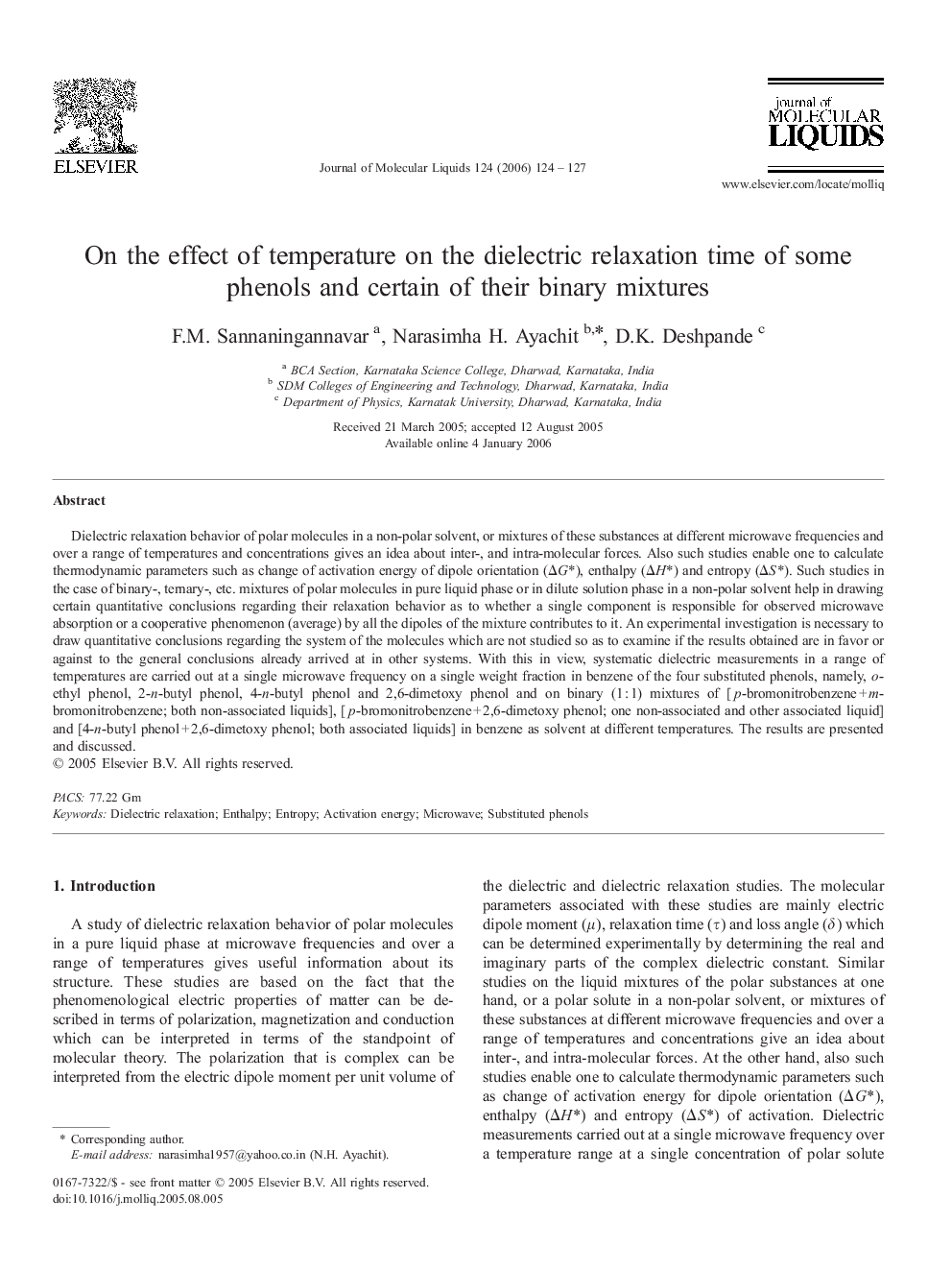| Article ID | Journal | Published Year | Pages | File Type |
|---|---|---|---|---|
| 5413921 | Journal of Molecular Liquids | 2006 | 4 Pages |
Abstract
Dielectric relaxation behavior of polar molecules in a non-polar solvent, or mixtures of these substances at different microwave frequencies and over a range of temperatures and concentrations gives an idea about inter-, and intra-molecular forces. Also such studies enable one to calculate thermodynamic parameters such as change of activation energy of dipole orientation (ÎG*), enthalpy (ÎH*) and entropy (ÎS*). Such studies in the case of binary-, ternary-, etc. mixtures of polar molecules in pure liquid phase or in dilute solution phase in a non-polar solvent help in drawing certain quantitative conclusions regarding their relaxation behavior as to whether a single component is responsible for observed microwave absorption or a cooperative phenomenon (average) by all the dipoles of the mixture contributes to it. An experimental investigation is necessary to draw quantitative conclusions regarding the system of the molecules which are not studied so as to examine if the results obtained are in favor or against to the general conclusions already arrived at in other systems. With this in view, systematic dielectric measurements in a range of temperatures are carried out at a single microwave frequency on a single weight fraction in benzene of the four substituted phenols, namely, o-ethyl phenol, 2-n-butyl phenol, 4-n-butyl phenol and 2,6-dimetoxy phenol and on binary (1 : 1) mixtures of [p-bromonitrobenzene + m-bromonitrobenzene; both non-associated liquids], [p-bromonitrobenzene + 2,6-dimetoxy phenol; one non-associated and other associated liquid] and [4-n-butyl phenol + 2,6-dimetoxy phenol; both associated liquids] in benzene as solvent at different temperatures. The results are presented and discussed.
Related Topics
Physical Sciences and Engineering
Chemistry
Physical and Theoretical Chemistry
Authors
F.M. Sannaningannavar, Narasimha H. Ayachit, D.K. Deshpande,
